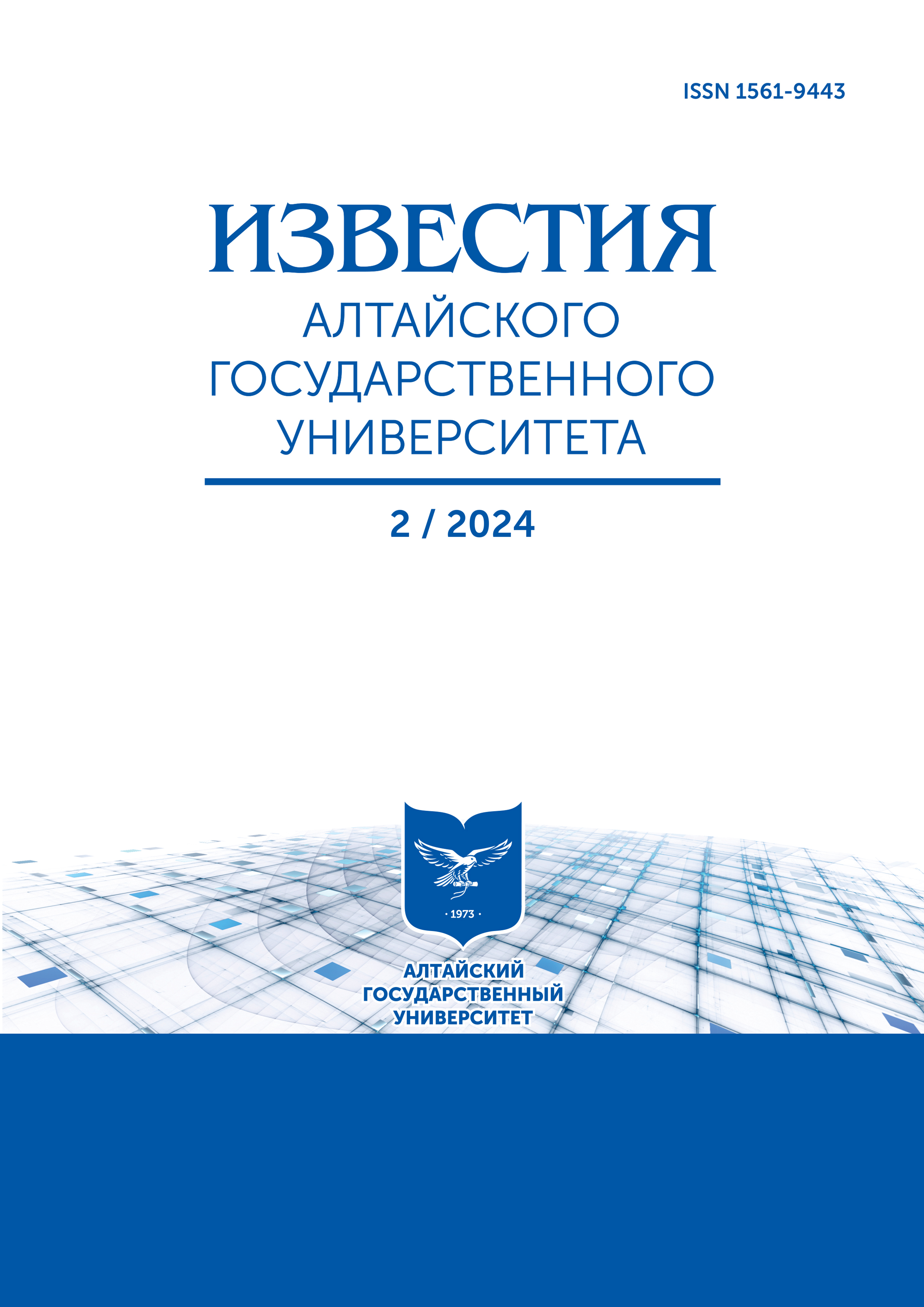Siberian Cossacks’ Participation in Ensuring Russia’s Interests in Central Asia in the First Half of the 19th Century
УДК 94 ББК 63.3(0)
Abstract
The article analyzes the role of the Siberian Cossacks in Russia's foreign policy in Central Asia in the first half of the 19th century. The favorable geographical position of the north-east of the Kazakh steppe allowed Russia to count on success in the competitive economic struggle with other European countries for sales markets. It was primarily about trade rivalry with England, Russia's first competitor in Central Asia. Russia had the advantage of being the only country that could conduct land trade with the inland areas of China and India, Bukhara, Kokand and Khiva. Since the time of Peter the Great, Russia has set a course for caravan trade with Central Asia through the territory of Kazakhstan, considering it a "gateway to Asia". With the construction of the new Ishim border line, the Board of Foreign Affairs for the first time proposed to the Senate of the Russian Empire to allow caravans from Troitsk to Semipalatinsk near the new fortifications, that is, through northeastern Kazakhstan.
Siberian Cossacks played a crucial role in the development and consolidation of Russia's intra-continental trade with Central Asian countries and China. Cossacks guarded caravans and merchants, erected strong points of trade and Russian administration in the Kazakh steppe. They became the main driving force behind the implementation of the provisions of the "Charter on Siberian Kyrgyz". Located in the Kazakh steppe, Cossack villages and settlements made it possible to stop the interference of Central Asian states in the life of Kazakhs, ensured the peaceful development of Kazakh lands under the rule of Russia. At the same time, at the initial stage, the establishment of Cossack settlements in the steppe and the subsequent armed clashes between Cossacks and Kazakhs became the reason for the uprising of Sultan Kenesary Kasymov.
Downloads
Metrics
References
Об истоках сибирского казачества // Сибирский вестник. СПб., 1818. Ч. 2. C. 27-52.
Копылов В.А., Мимахин В.П., Фабрика Ю. А. Сибирский военный округ. Первые страницы истории. Новосибирск : Зап.-Сиб. кн. изд-во, 1995. 698 с.
Российский государственный военно-исторический архив (РГВИА). Ф. 1. Оп. 1. Д. 2855.
Казахско-русские отношения в XVI-XVIII вв. : сб. документов и материалов. Алма-Ата : Академия наук Казахской ССР, 1961. 746 с.
Казахско-русские отношения в XVIII-XIX веках (1771-1867 гг.). : сборник документов и материалов. Алма-Ата : Академия наук Казахской ССР, 1964. 575 с.
Левшин А.И. Описание киргиз-казачьих, или кир-гиз-кайсацких орд и степей / под ред. М.К. Козыбаева. Алматы : Санат, 1996. 656 с.
Хафизова К.Ш. Степные властители и их дипломатия в XVIII-XIX веках : монография. Нур-Султан : КИСИ при Президенте РК, 2019. 480 с.
Сулейменов РБ., Моисеев В.А. Из истории Казахстана XVIII в. (о внутренней и внешней политике Аблая). Алма-Ата : Наука, 1988. 144 с.
Андреев И.Г. Описание Средней орды киргиз-кайса-ков. Алматы : Гылым, 1998. 280 с.
Бекмаханов Е. Казахстан в 20-40 годы ХК века. Алма-Ата : Казак университет, 1992. 400 с.
РГВИА. Ф. 1. Оп. 1 Д. 6013.
Дубицкий А.Ф. Скрижали истории. Краеведческие заметки. Целиноград : Целиноградское изд-во, 1992. 46 с.
Путинцев Н.Г. Хронологический перечень событий из истории Сибирского казачьего войска со времени водворения западносибирских казаков на занимаемой ими ныне территории. Омск : Типография окружного штаба, 1891. 271 с.
РГВИА. Ф. 405. Оп. 6. Д. 1569.
РГВИА. Ф. 1. Оп. 1. Д. 12188.
РГВИА. Ф. 1. Оп. 1. Д. 12187.
РГВИА. Ф. 1. Оп. 1. Д. 12192.
РГВИА. Ф.1 Оп. 1. Д. 13550.
Аристов Н. А. Усуни и кыргызы или кара-киргизы. Очерки истории и быта населения западного Тянь-Шаня и исследования по его исторической географии. Бишкек : Илим, 2001. 582 с.
Асеев А.А. Политика России в отношении восстания Кенесары Касымова 1837-1847 гг. (региональный аспект) : автореф. дис. ... канд. ист. наук. Барнаул, 2004. 23 с.
Copyright (c) 2024 Игорь Русланович Прохоров

This work is licensed under a Creative Commons Attribution 4.0 International License.
Izvestiya of Altai State University is a golden publisher, as we allow self-archiving, but most importantly we are fully transparent about your rights.
Authors may present and discuss their findings ahead of publication: at biological or scientific conferences, on preprint servers, in public databases, and in blogs, wikis, tweets, and other informal communication channels.
Izvestiya of Altai State University allows authors to deposit manuscripts (currently under review or those for intended submission to Izvestiya of Altai State University) in non-commercial, pre-print servers such as ArXiv.
Authors who publish with this journal agree to the following terms:
- Authors retain copyright and grant the journal right of first publication with the work simultaneously licensed under a Creative Commons Attribution License (CC BY 4.0) that allows others to share the work with an acknowledgement of the work's authorship and initial publication in this journal.
- Authors are able to enter into separate, additional contractual arrangements for the non-exclusive distribution of the journal's published version of the work (e.g., post it to an institutional repository or publish it in a book), with an acknowledgement of its initial publication in this journal.
- Authors are permitted and encouraged to post their work online (e.g., in institutional repositories or on their website) prior to and during the submission process, as it can lead to productive exchanges, as well as earlier and greater citation of published work (See The Effect of Open Access).








